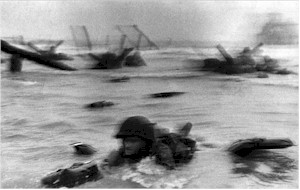 |
| Franklin Roosevelt |
It's turning out to be a turbulent year in the United States, mostly because of the presidential election. With vastly differing ideologies and stated visions for the country's future direction, voters are going to end up deciding what choices our country makes, both at home and abroad: whether to focus on rebuilding our country and not get involved in world affairs or to dive head-first into a world tearing itself apart with shifting alliances and blood being spilled. Finally, voters will have to decide whether to elect a candidate that might not take the country down the best path but it would be historic nonetheless.
If this sounds like 2016, then you are only partially right. The truth is, this situation is one our country has faced before. In 1940, the United States found itself staring at a world that was tearing itself apart, and we as a country were reluctant to get involved.
By this time, mainland Europe had been overrun by Germany and Great Britain was feeling very much alone in the face of a possible invasion as well as constant aerial attacks. Britain was in desperate need of war materiel and looked to the United States for aid. They would get it, but not without controversy.
 |
| Wendell Willkie |
Franklin Roosevelt was nearing the end of his second term. The country was slowly pulling out of the Great Depression, but there was still much rebuilding to be done. At this point, there was no law that limited presidents to two terms, although it was a standing tradition since George Washington refused to run for a third term. On the Republican side, an unlikely Wall Street candidate named Wendell Willkie, a former Democrat who supported Roosevelt's 1932 election but now was a critic of his policies towards monopolies in the electric industry, was rising to fame and gained a surprising amount of support.
Roosevelt surprised many, including his own party, when he finally announced he would run for a third term. Roosevelt ran on a platform that sounded very similar to Woodrow Wilson's 1916 campaign promise America will not be drawn into another World War. While many were dubious about whether this promise would be kept, many more worried about Roosevelt's deal with Britain for their purchase of arms, and later the enactment of Lend-Lease. In fact, Churchill respected Roosevelt's pleas not to publicly say anything that implied America would be dran into the fighting until after the election.
In the end, Roosevelt capitalized on his Depression-era popularity and his campaign promises to pursue foreign policies that kept America out of the fighting to a 55%-45% victory over Willkie. However, since the war overlapped with the next election year, 1944, Roosevelt was again faced with re-election, this time for his fourth term.
 |
| Thomas Dewey |
This time, though, there was no formal opposition on the Democratic side against Roosevelt, as by that time the war seemed to be drawing to a close. On the Republican side, Thomas Dewey was nominated on the anti-New Deal and smaller government platform, but the current system was working too well for that route to stand much of a chance. Roosevelt won re-election with a comfortable 54%-46% victory.
However, rumors during the campaign of Roosevelt's declining health, while never confirmed at the time, turned to reality on April 5, 1945 with his death just six months into his fourth term. Roosevelt's death dealt a heavy blow to American morale, since many alive at the time could not remember having another president. This directly led to the ratification of the 22nd Amendment in 1947, which limited the presidency to two terms.
What conclusions can be drawn from these two elections? Well, we know that history is made every day, but some things are more historic than others. Also, some things can only be seen as good in hindsight. Just imagine if we as a nation had isolated ourselves from the world's problems. Would we have been drawn into the war at Pearl Harbor again? Maybe not, but if we didn't take the steps we did, then what would the world we live in today look like? Until next time, thank you for reading.
(Photos sourced from Wikipedia. Information sourced from Wikipedia and Inferno: The World at War 1939-1945 by Max Hastings)




